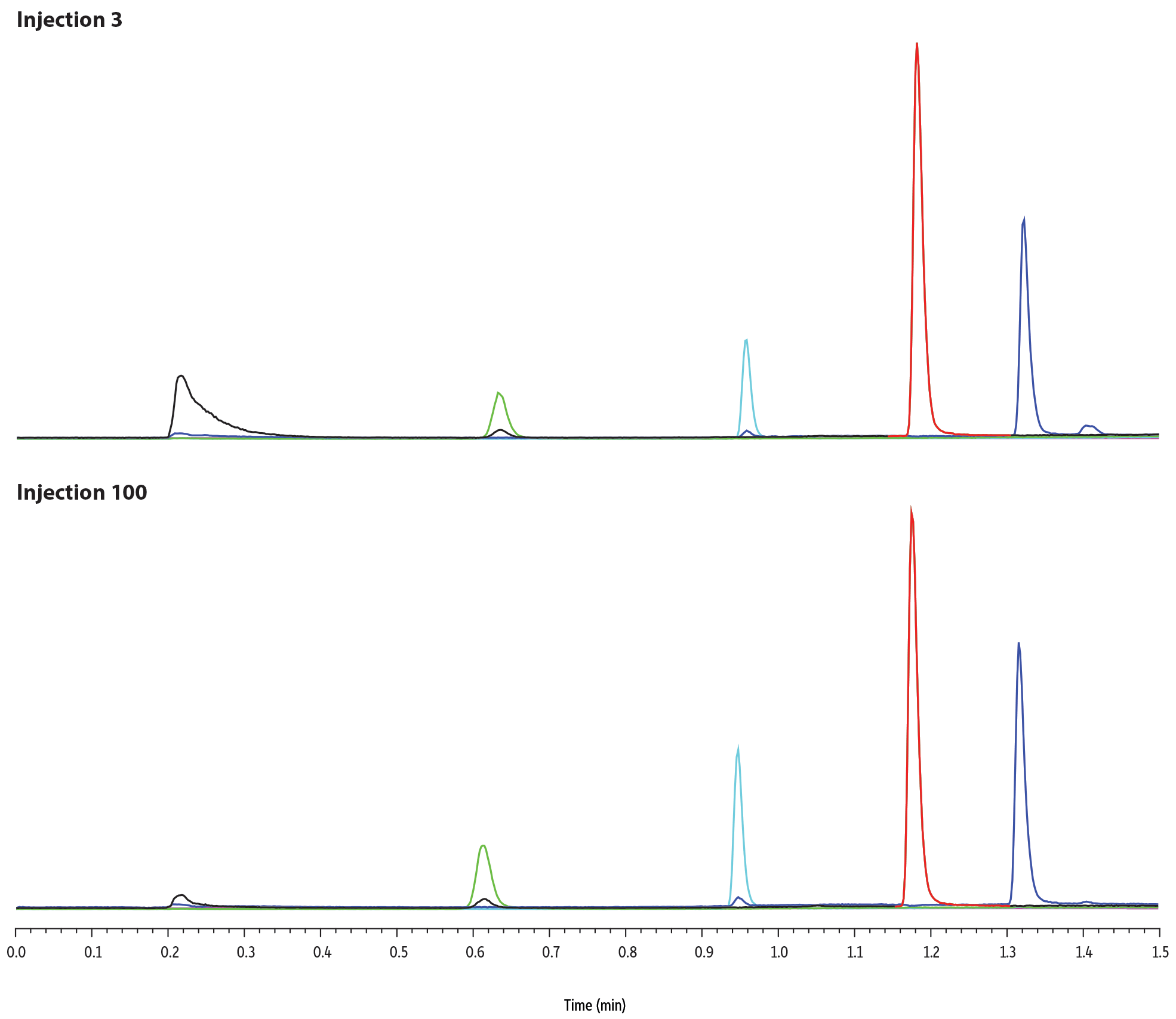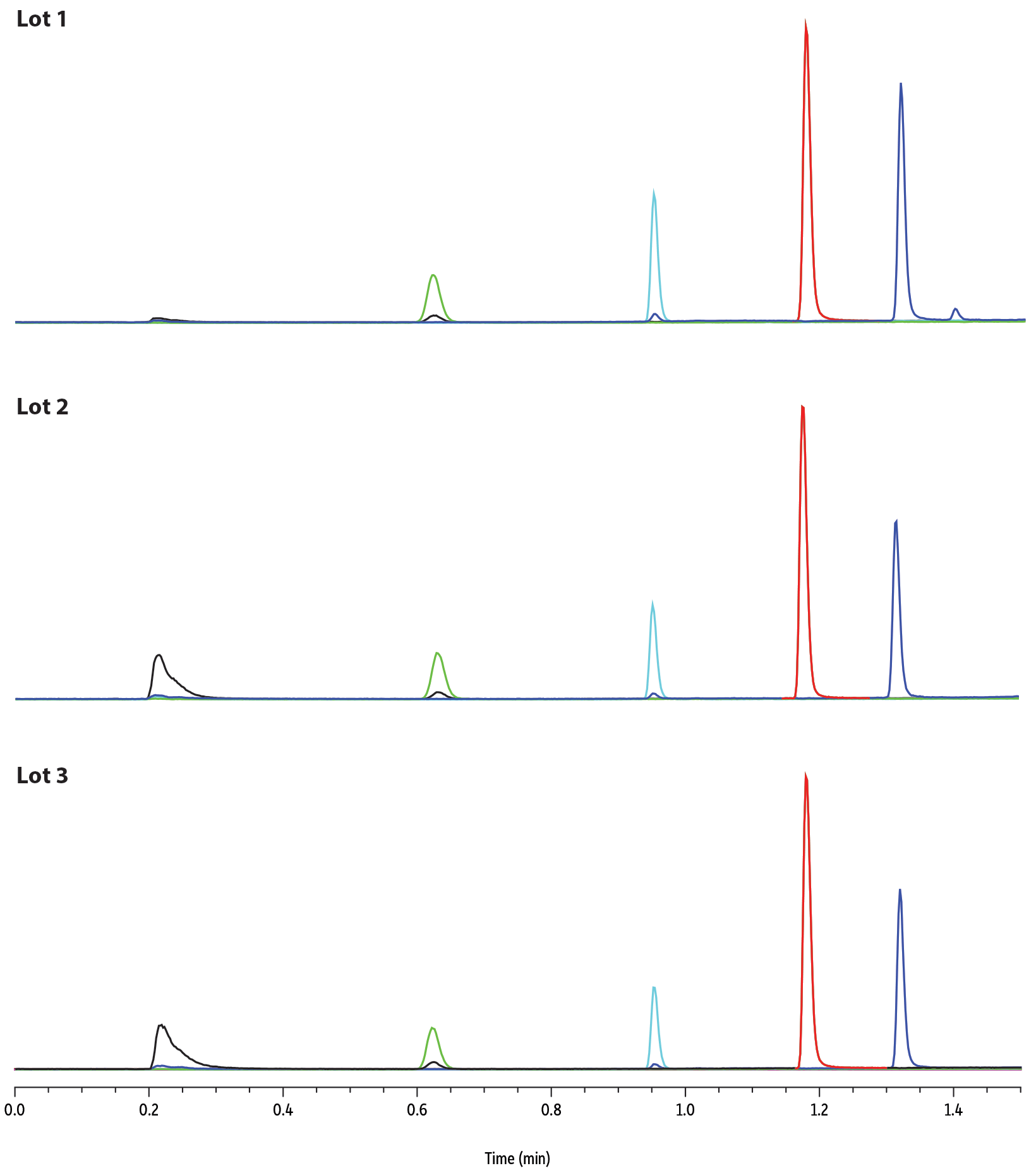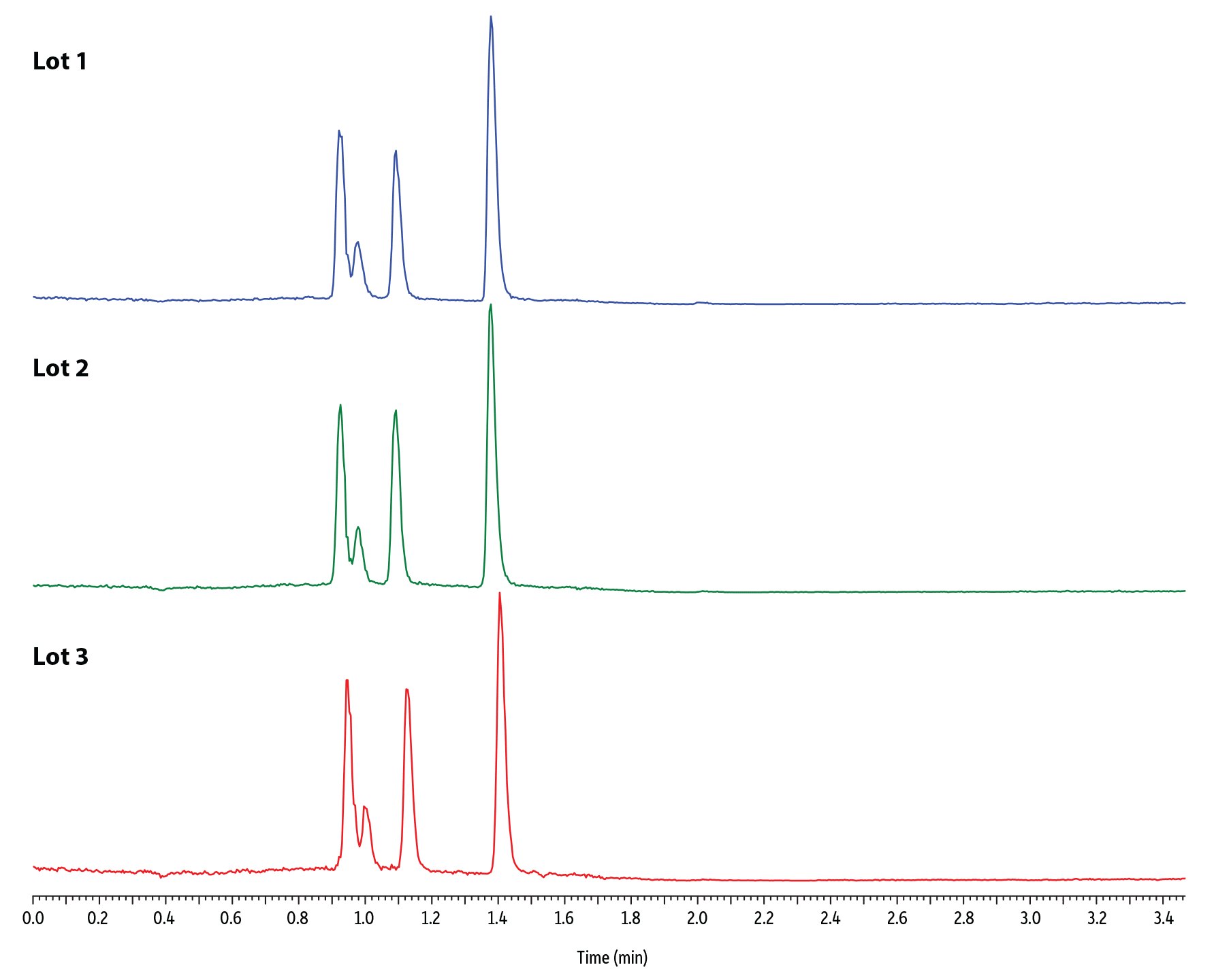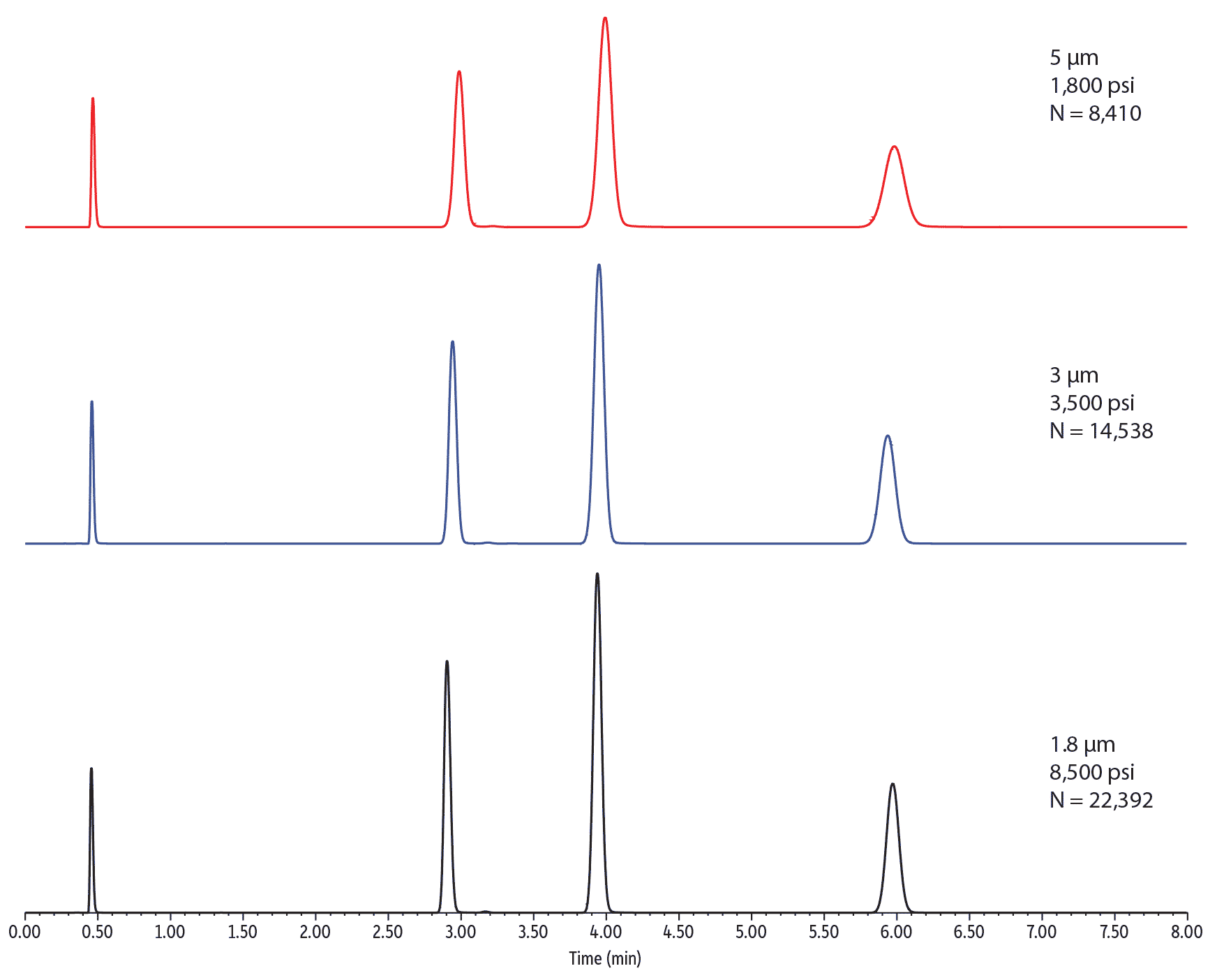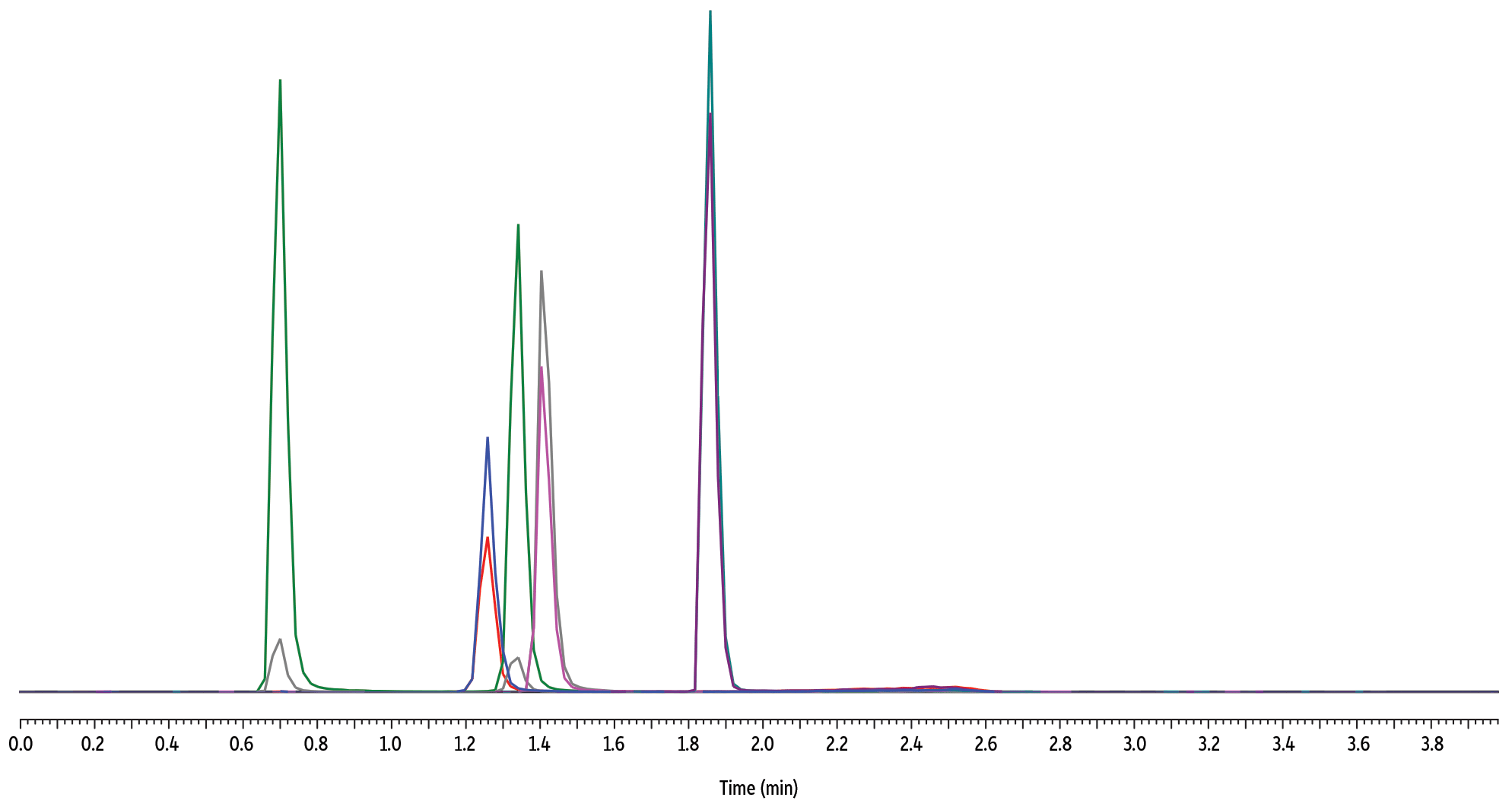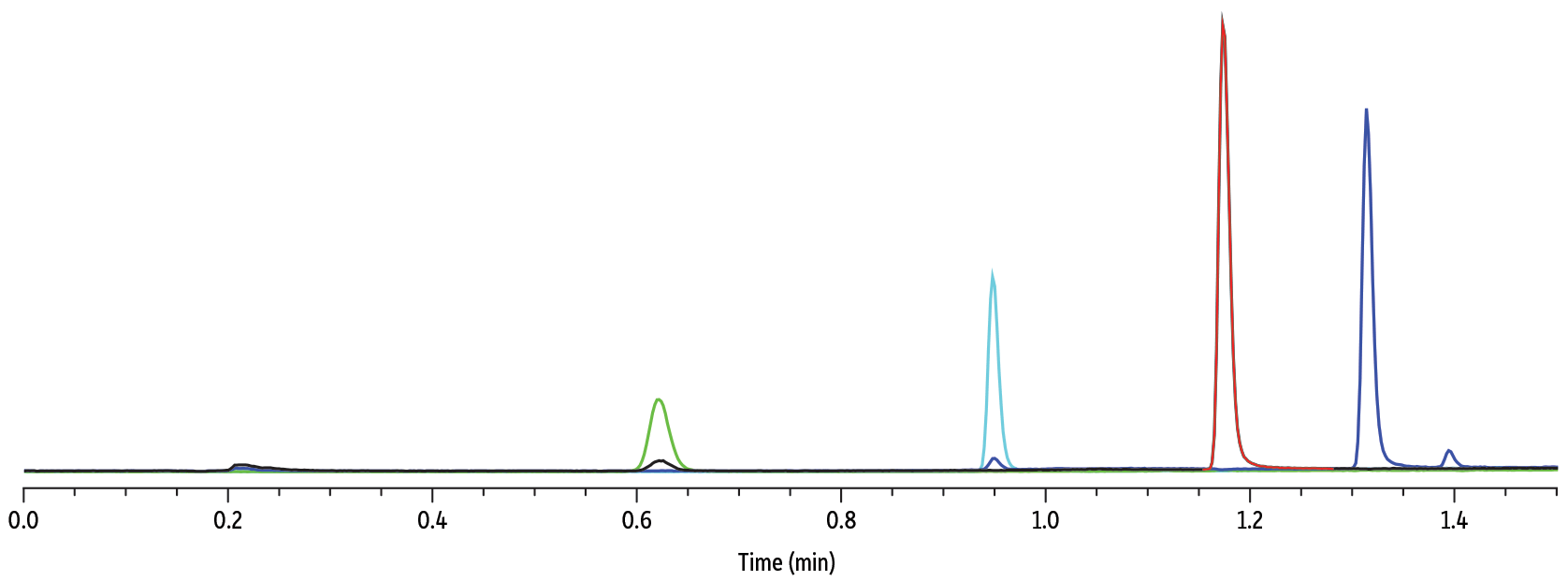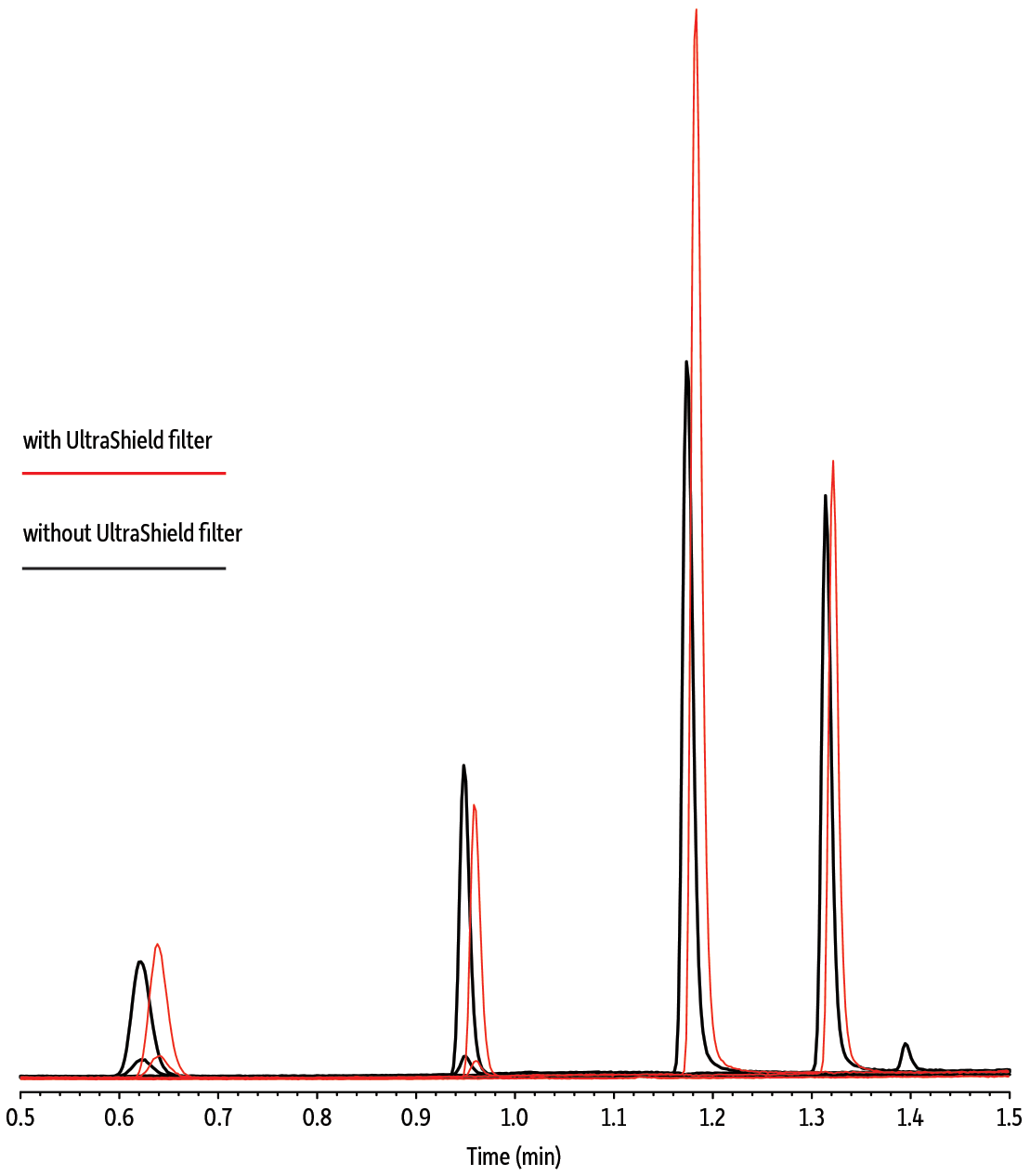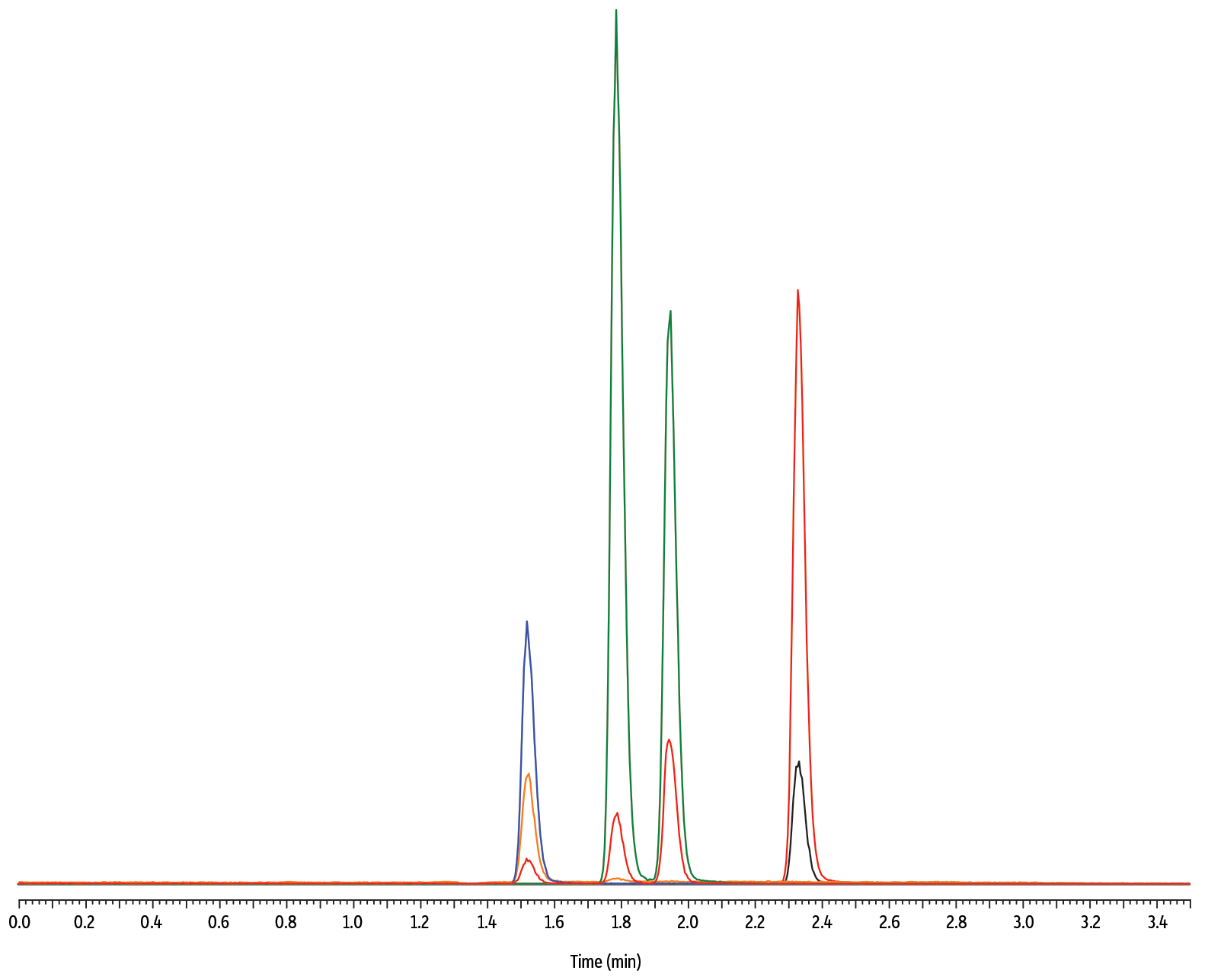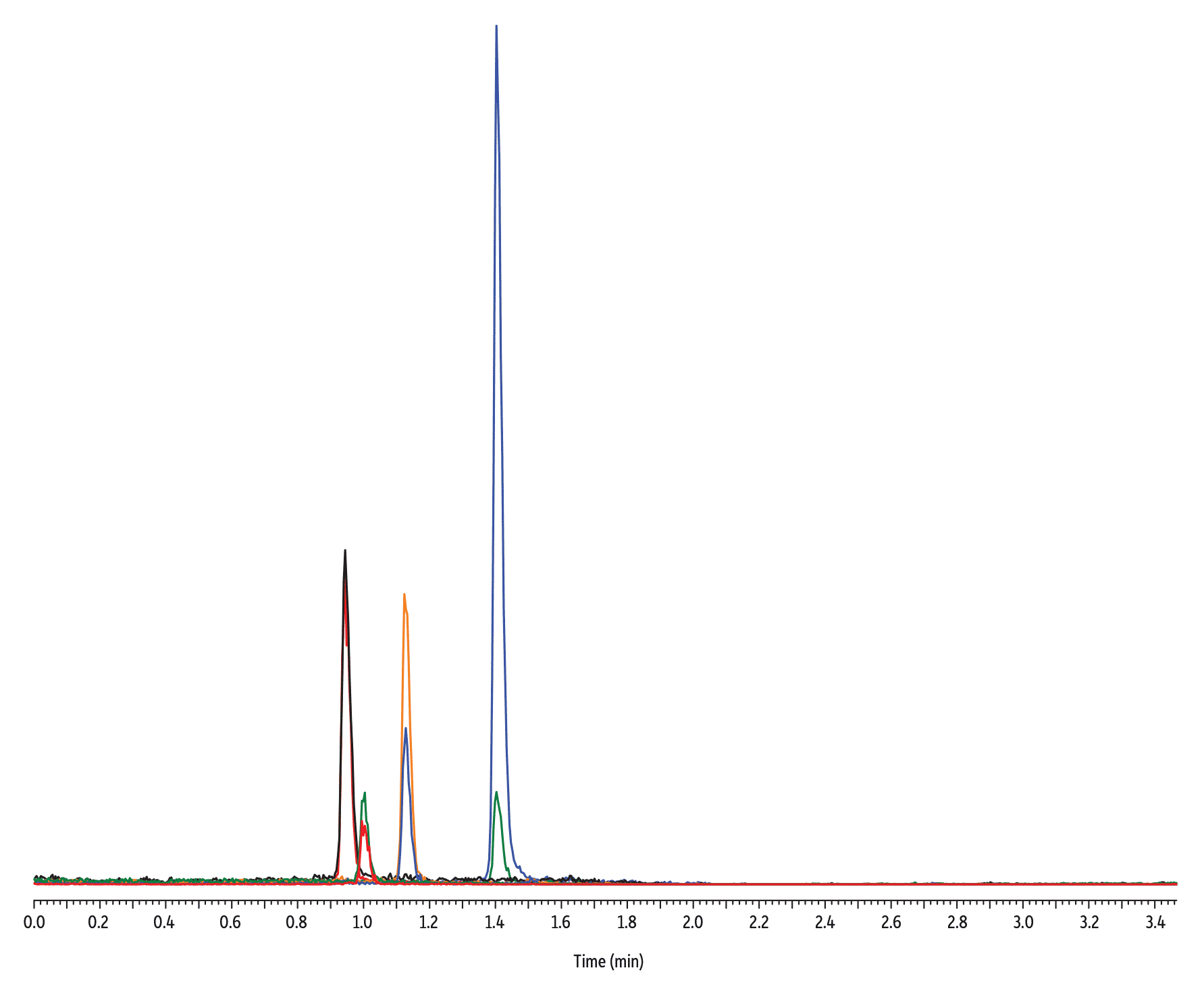Force Performance LC Columns: Apply Force to Your LC Methods
- Long-lasting and reproducible—even with rapid cycling and elevated UHPLC pressures.
- Fully scalable between HPLC and UHPLC—easily transfer and optimize methods.
- Premium quality—backed by our 100% Pure Satisfaction guarantee.
Restek’s new Force performance LC columns give you the power to maximize instrument uptime, increase productivity, and transfer methods across your entire lab, from your trusted-but-aged HPLC to the cutting-edge UHPLC you just plumbed last week. This incredibly rugged and supremely consistent column line represents the culmination of our twenty-plus years in LC dedicated to continually improving our phase chemistries, our lot and lifetime testing, and our bonding and packing procedures.
Meet today’s workflow needs—and prepare for tomorrow’s—by applying Force LC columns to all of your instrument platforms.
Available with Restek's most-popular and highly selective Biphenyl and FluoroPhenyl phases, as well as a general-purpose C18.
|
|
|
|
|
|
USP Phase Code |
L11 |
L1 |
L43 |
|
Stationary Phase Category |
Phenyl |
C18, octadecylsilane |
Pentafluorophenyl propyl |
|
Ligand Type |
Biphenyl |
End-capped C18 |
Fluorophenyl |
|
Particle Size |
1.8 µm, 3 μm, or 5 μm |
1.8 µm, 3 μm, or 5 μm |
1.8 µm, 3 μm, or 5 μm |
|
Pore Size |
100 Å |
100 Å |
100 Å |
|
Surface Area |
300 m2/g |
300 m2/g |
300 m2/g |
|
Carbon Load |
15% |
20% |
10% |
|
End-Cap |
yes |
yes |
no |
|
pH Range |
2.0 to 8.0 |
2.0 to 8.0 |
2.0 to 8.0 |
|
Maximum Temperature |
80 °C |
80 °C |
80 °C |
Apply Force LC Columns to your LC Methods…for Longer Column Life
Elevated pressures and rapid pressure cycling put extreme stress on your LC column and shorten its life. And when the demand to increase lab productivity meets the growing pressure limits of modern LCs and the faster cycle times of new methods, many competitor columns simply can’t survive. Force LC columns from Restek are designed and manufactured to handle high-pressure, high-stress conditions. Whether you’re running a 3 or 5 μm column on an older HPLC or a 1.8 μm on the newest UHPLC in your lab (Figures 1 & 2), your method will give you the same separation from one injection to the next when you trust your workflow to the extended lifetime of a Force LC column.
Figure 1: At over 10,000 psi, you may be used to seeing a drop in efficiency, but Force LC columns will take the pressure.
1000 injections and still going strong at high pressure.
Figure 2: Rapid changes in pressure place more stress on a column than even high pressures can, but Force LC columns will handle repeated analyses with no change in separation. You get stable retention times and peak shapes even with rapid cycling!
Apply Force LC Columns to your LC Methods…for Improved Reproducibility
Once you set up and validate a workflow, you move on to developing the next new method. You don’t have time to repeatedly revisit past methods because your chosen column is giving you different results with each lot. Peak shapes and retention times need to be maintained over the lifetime of your workflow to ensure consistent results, reduce unplanned downtime, and preserve your own productivity. Force LC columns have the lot-to-lot reproducibility you need to rely on (Figure 3)—backed by Restek’s strict QC system and our 100% Pure Satisfaction guarantee—so that you are free to focus your energy on what’s next.
Figure 3: Rapid changes in pressure place more stress on a column than even high pressures can, but Force LC columns will handle repeated analyses with no change in separation. You get stable retention times and peak shapes even with rapid cycling!
Force C18
Force FluoroPhenyl
Apply Force LC Columns to your LC Methods…for Complete Scalability
To accelerate time to market, analysts will often develop methods on fast UHPLC instruments using sub-2 μm particle columns. But the methods must then be scaled to match the analysis time and pressure limitations of the traditional HPLCs and the 3 or 5 μm columns that will actually be doing the work. To make this transition easier and ensure consistent results, Force LC columns are available in three particle sizes that are manufactured on the same silica support with the same properties to reliably and easily provide the same separation on any instrument platform (Figure 4).
And, of course, it works both ways: fully scalable Force LC columns also make it easy to update conventional HPLC methods to UHPLC instruments to increase sample throughput and reduce solvent consumption and waste disposal costs.
Figure 4: With identical isocratic flow rates, 5, 3, and 1.8 μm Force columns still offer the same results. (If using a gradient, simple equations can help you adjust slope and time points.) Scaling doesn’t get easier than that! Notice that peak shape and plate number improve as particle size decreases—ideal for increased MS sensitivity.
Force LC Columns at Work: Time-Tested Restek Biphenyl Phase
The established choice for pharmaceutical testing since 2005
Properties:
Switch to a Biphenyl when:
|
|
Column Interaction ProfileDefining Solute Interactions:
Complementary Solute Interaction:
|
|
Solute Retention ProfileTarget Analyte Structures:
Target Analyte Functionalities:
|
|
Figure 5: Whether for therapeutic drug monitoring or toxicology, Force Biphenyl columns were made for applications where fast, reliable identification of drugs and metabolites could be a matter of life and death.
Figure 6: Accurate quantification is critical for cardiac drugs due to their narrow therapeutic range, and the Restek Biphenyl phase on a Force LC column is the ideal choice.
Force LC Columns at Work: General-Purpose Restek C18 Phase
Force column dependability, scalability, and quality in a C18
Properties:
Switch to a C18 when:
|
|
|
|
|
Column Interaction ProfileDefining Solute Interaction:
|
|
Solute Retention ProfileTarget Analyte Structure:
Target Analyte Functionality:
|
|
Figure 7: A C18 is a common first choice for method developers, and as shown here for these isoflavones commonly found in nutraceuticals, a Force C18 column is the C18 to choose.
Tech Tip: Small-Particle Column ProtectionProtecting your column is always recommended. Restek offers EXP guard column cartridges for our 3 and 5 µm Force LC columns, but for 1.8 µm columns, where the additional volume of a guard is an issue, reach for the UltraShield UHPLC PreColumn filter with 0.2 μm frit. Its minimal dead volume (1 µL) makes it recommended for UHPLC up to 15,000 psi. |
Figure 8: You can pair a 1.8 μm Force column with an UltraShield UHPLC PreColumn filter to prolong column lifetime—without significantly altering retention times.
Force LC Columns at Work: Reliably Versatile Restek FluoroPhenyl Phase
Get the power of HILIC and RP modes in one LC column
Properties:
Switch to FluoroPhenyl when:
|
|
Column Interaction ProfileDefining Solute Interactions:
Complementary Solute Interactions:
|
|
Solute Retention ProfileTarget Analyte Structure:
Target Analyte Functionality:
|
|
Figure 9: Xanthine analysis can be performed in clinical settings, in sports to target misuse, or even in food analyses. A Force FluoroPhenyl column offers fast, simultaneous analysis of multiple compounds including isobars paraxanthine and theophylline.
Figure 10: Restek's Force FluoroPhenyl column makes quick and effective work of nitrofurans, which are often used in animal feed as antibiotics/antimicrobials but are also banned in many regions.
Figure 11: You can pair a 1.8 μm Force column with an UltraShield UHPLC PreColumn filter to prolong column lifetime—without significantly altering retention times.
SPP or FPP?Superficially porous particles (SPP) are becoming increasingly popular for providing faster, more efficient analyses without UHPLC pressures. And when speed is your goal, Restek recommends the Raptor line of LC columns. However, retention is often just as important to sharpen peaks and increase sensitivity for mass spec, and when that is the case, fully porous particle (FPP) Force LC columns are ready to be put to work. Either way, Restek has a high-performing, reliable LC column for you. |
|
SPP |
FPP |
|
|
|


